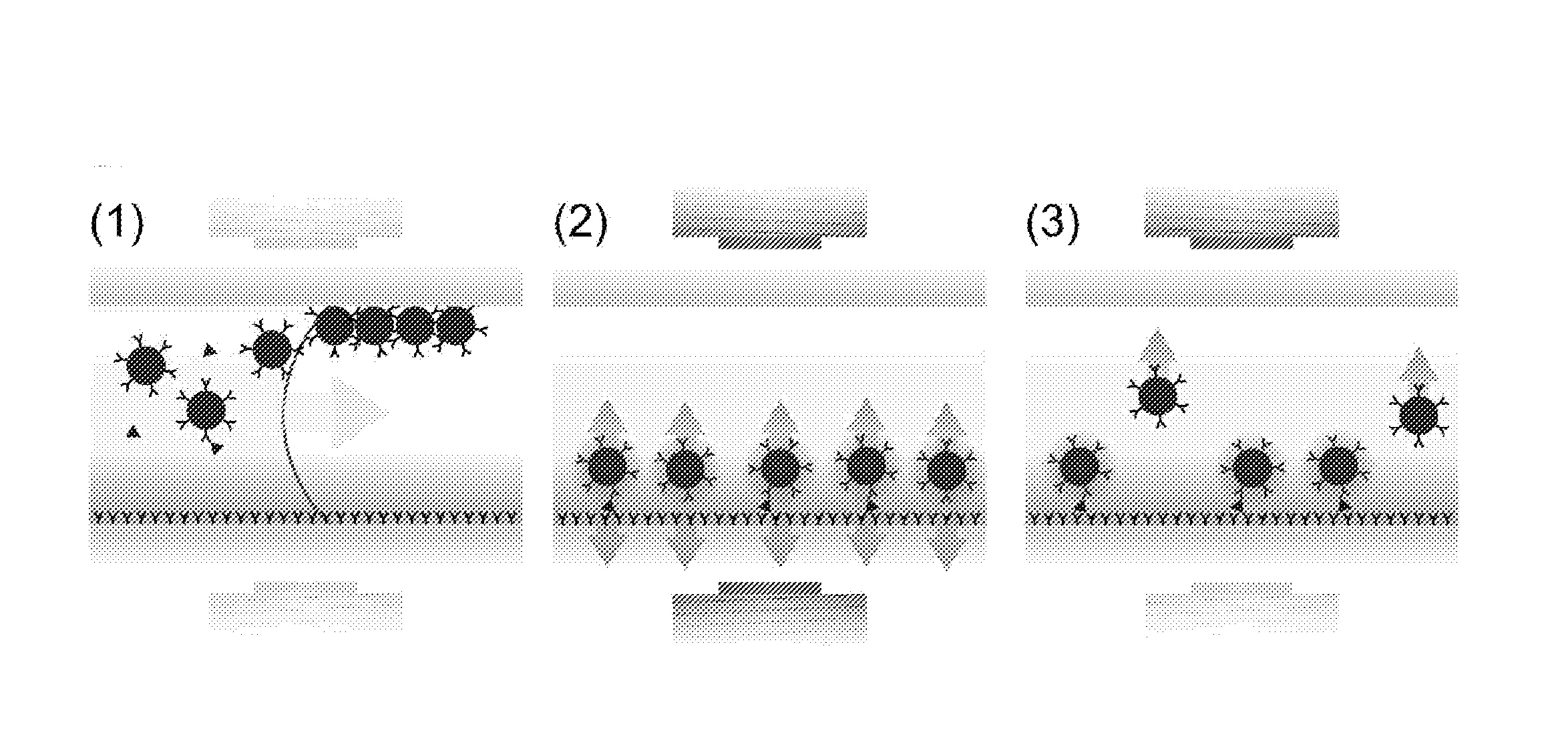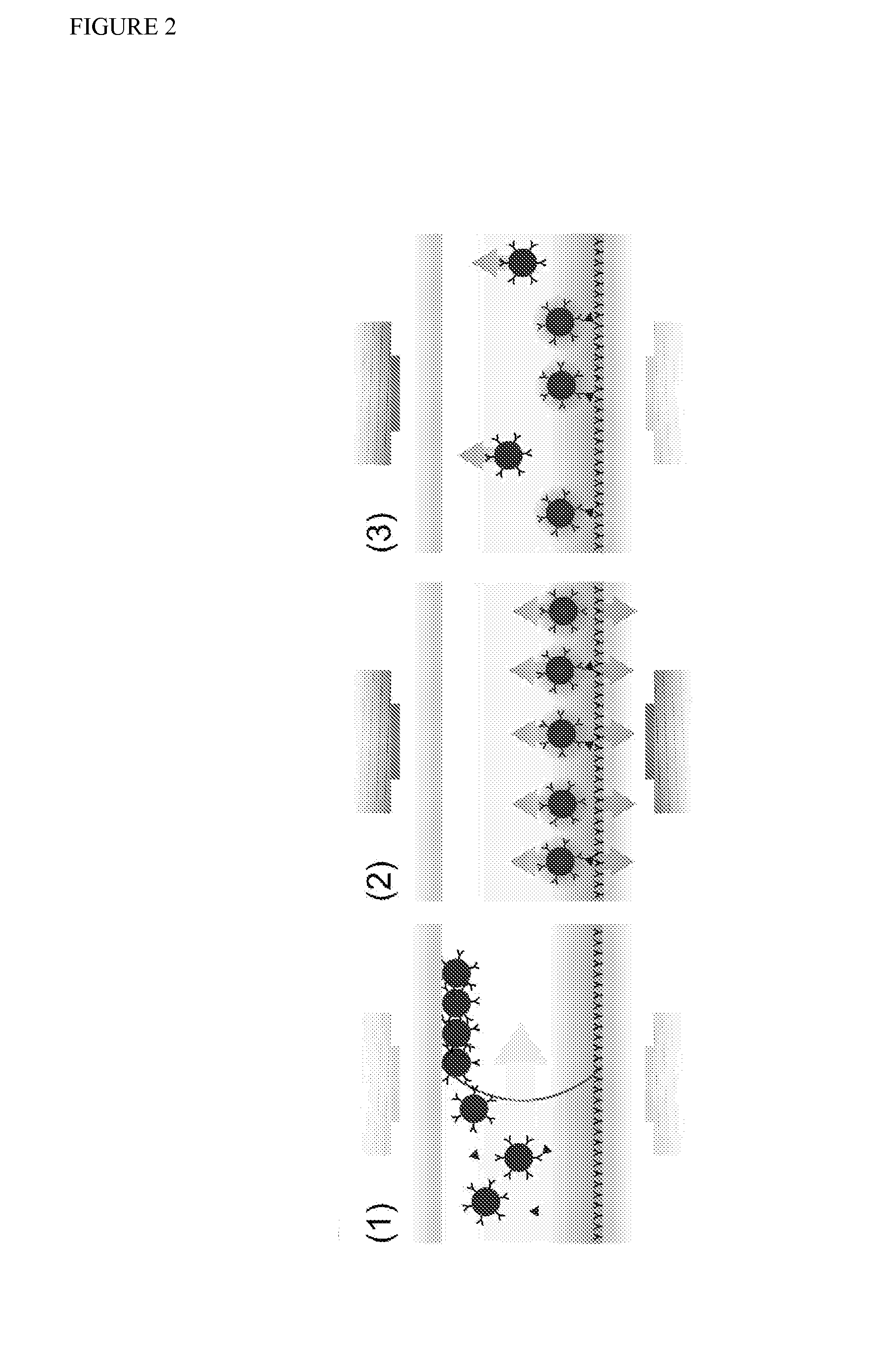Particle repulsion to enhance surface contact in magnetic particle immunoassays
a magnetic particle and immunoassay technology, applied in the field of particle repulsion to enhance surface contact in magnetic particle immunoassays, can solve the problems of reducing the binding chance per particle, slow binding of functionalized particles having bound a target molecule to the surface, and reducing the binding efficiency of particles to surfaces. , to achieve the effect of enhancing the binding efficiency of particles to surfaces
- Summary
- Abstract
- Description
- Claims
- Application Information
AI Technical Summary
Benefits of technology
Problems solved by technology
Method used
Image
Examples
example 1
Effect of Negatively Charged DNA Molecules on Zeta Potential
[0215]The effect of negatively charged DNA molecules was analyzed. To this end highly negatively charged DNA molecules were bound to the particle. The charge on the particles was measured as the zeta potential. The charge increases when the amount of highly negatively charged DNA molecules bound to the particle is increased. Furthermore, higher charges are measured for particles carrying longer DNA molecules (bearing more charges).
[0216]Zeta potential values for 500-nm Ademtech particles, functionalised with streptavidin molecules and bound to different amounts of biotin-functionalised dsDNA of varying lengths were measured in 10 mM phosphate buffer, at a pH 7.4 (see FIG. 4).
example 2
Effect of Increasing Number of 97 bp dsDNA
[0217]In order to determine effects of increasing number of 97 bp dsDNA FTIR signal amplitudes for assays performed with varying amounts of biotin-tagged 97 bp dsDNA attached to 500 nm Ademtech superparamagnetic particles, functionalised with streptavidin proteins were determined. The more DNA molecules per particle, the larger the surface contact, as can be seen in FIG. 6.
example 3
Signal Change at the End of an FTIR Assay
[0218]In a further experiment the signal change at the end of an FTIR assay. First, a single 97 bp dsDNA fragment carrying a biotin at one end of the molecule and a Texas-Red molecule at the other end of the DNA was bound to the streptavidin particle. Subsequently, similar 97 by DNA molecules, but lacking the Texas-Red molecule, were added per particle to the indicated amount. All particles were tested in an FTIR assay with a printed spot of anti-Texas Red antibodies (see FIG. 7).
PUM
| Property | Measurement | Unit |
|---|---|---|
| zeta potential | aaaaa | aaaaa |
| size | aaaaa | aaaaa |
| size | aaaaa | aaaaa |
Abstract
Description
Claims
Application Information
 Login to View More
Login to View More - R&D
- Intellectual Property
- Life Sciences
- Materials
- Tech Scout
- Unparalleled Data Quality
- Higher Quality Content
- 60% Fewer Hallucinations
Browse by: Latest US Patents, China's latest patents, Technical Efficacy Thesaurus, Application Domain, Technology Topic, Popular Technical Reports.
© 2025 PatSnap. All rights reserved.Legal|Privacy policy|Modern Slavery Act Transparency Statement|Sitemap|About US| Contact US: help@patsnap.com



